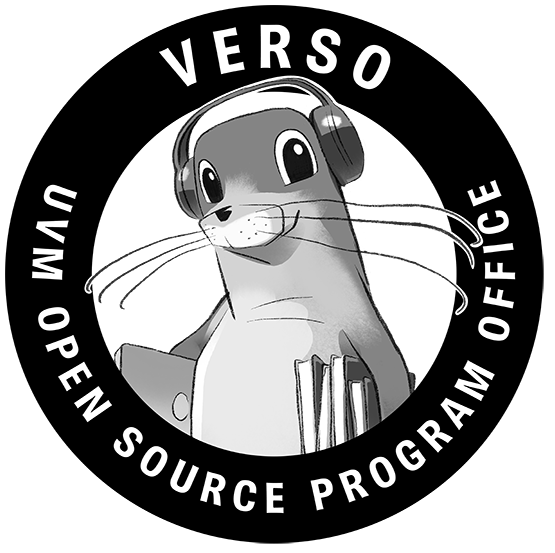Teaching Modules
This is going to be a constantly changing and growing page with content meant for other academic OSPOs to repurpose and modify as they see fit. Any logos of UVM cannot be reused otherwise this content is under creative commons license.
It is useful to say that each guest lecture and event is tailored to the specifics of the audience, like are the students freshman or graduate students, or in some cases is it the general public. When reusing this material it is useful to consider who you are presenting to and what will engage them the most.
Human Centered Design
This presentation was for CDAE 060 Design Innovation I with a focus on Human Centered Design. The class was mostly composed of first year students. We had 50 minutes which we split out into three Think/Pair/Share activities designed to get the students talking and interacting.
Think-pair-share (TPS) is a collaborative learning strategy where students work together to solve a problem or answer a question. This strategy requires students to (1) think individually about a topic or answer to a question individually, (2) share ideas with classmates and finally 3) Discuss their insights with the whole class.
During TPS we tried to direct students to pair with a new partner but that proved difficult given the nature of the desks and students not wanting to move from their desks and bags. It took the second TPS to get them talking and a little more engaged.
Our approach was to tag-team slides and teach the core concepts and then bring it back to an open source solution to the problem.
Un/Intended Consequences
This guest lecture was for ME 265 / BSAD 293 Integrated Product Development with about 40 students from Sophomores to Seniors with a mix of engineering and business majors.
The goal was to explore communication and how empathy for the user’s perspective can help you get a better result. If Open Source work is designed to be accessible and documentation clear, the project is much more likely to be sustainable.
We first introduced an exercise call Evil Eights where students designed bad user experiences to get them thinking about how things should not work. We then went into Exact Instructions where they were broken into team, one teammate stepped out while the rest build a small object with Legos. The team then had to write instructions, deconstruct the object and then the teammate who had stepped outside had to come back in and try to recreate the object from the written instructions only. Students who stepped outside were also engaged in a discussion about design from the other co-teacher.
The amount of time allotted proved to be a little too short for each step although the students got faster each round. It is ideal not to prep the student’s too much for the difficulty of the exercise otherwise they may be too competent in the first round to get the point.
Post-class feedback requested clearer instructions (the irony), perhaps a timer on the screen and clear connections back to practical examples both in and outside of Open Source. This deck is as it was and has not been modified yet, this will be updated when it is run again.
